Getting to Asia is not that big a deal anymore from many parts of the world. However, once you arrive at your destination, the fun begins. For those that have never experienced leaving the sanctity of an airport in most Asian countries and braving the gauntlet of rogue drivers waiting by the exits, you are in for a surprise. Whether it is hailing a cab in Beijing, jumping on a Bangkok ferry, renting a scooter in Bali, or being scammed by a tuk tuk driver in Chiangmai, there are a few tips every traveler should know. Hopefully, some of the ideas below will help those future global wanderers as they try to “get around in Asia.” Because there are so many different countries each with their own etiquette and things to watch out for, this will just be a short general discussion.
1. Booking flights
People love them or hate them but if you are booking your own flights to and around Asia, it is pretty hard to beat Air Asia for prices. A quick visit to their website will soon give you an idea of how cheap it really is to fly to from place to place in this part of the world. You will also save yourself a lot of time and a little money if you book your inflight meal ahead. And you will be served before the rest of your fellow passengers. Buying any bus tickets you need to get from the airport to the city is also possible on their website. If you have a flexible schedule, Air Asia has incredible deals on a regular basis. Find one and plan you days off around it instead of the other way around.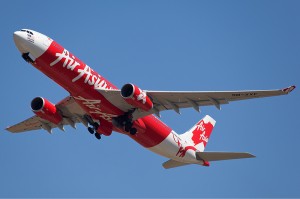
Once you are inside the borders of most Asian countries, you will find many deals to nearby locations with airlines that probably aren’t that visible on major booking sights. If you are on a longer trip and have a flexible schedule it is often best to wait until you arrive at your main destination before booking any smaller flights to neighbouring countries. Inside Thailand, airlines such as Laos Airlines and Silk Air offer great deals to nearby locations.
In China, Elong is the way to go to find inexpensive flights. It is the Chinese version of Expedia. The prices on this site cater to the Chinese population and are often cheaper than those you will find in other places. The only downside is you have to fax them a copy of your credit card in order to buy tickets but it is not a big deal and it is very secure. Don’t be put off by the strange airlines you may see; most of them are fine! China Southern and China Eastern are the two big ones but there are many others you will also come across. The only one I wasn’t so lucky with was Lucky Air but that is another story in itself. Leave lots of time between connections because delays are common throughout Asia, especially in China.
2 Airport taxis
I can only speak for China and a few other Asian countries that I have visited. However, there seem to be some commonalities between all of them when it comes to taxis. First, you can easily pay way more than you should if you have no idea what you are doing and secondly, politeness goes out the window when you are trying to find one.
Often, you will be bombarded by rogue drivers as soon as you exit the departure gate in many airports. Although this practice is rampant in China, you will also come across it in most other Asian countries. These rogue drivers may at first seem to be genuine cabbies but once you follow them halfway across the airport parking lot into their sometimes junky vehicles, you soon realize that they are not the real deal. Ignore them all and head for the main airport exit doors to the outside world. There will always be at least one bona fide queue of real taxis waiting to pick up passengers. Although sometimes the line will look very long, it usually moves quite quickly. In some airports, such as the Suvarnabhumi International Airport in Bangkok, there will be a taxi counter you need to go to book the taxi.
Depending on where you end up, the taxi payment process can be full of choices. Of course, the one most of us are used to is the good old meter. But you may discover as you are driving along that the driver has not turned on his meter. This could result in a hefty fee being demanded at your destination point. They love this trick everywhere in Asia. The only place we have had non-stop success with taxis was in Wuhan, China, where we lived for six years. They were some of the most honest and friendly drivers we have come across anywhere in Asia.
In some places, the driver will ask if you want to use the meter or not. In others, they will refuse to turn it on at first. If you are not familiar with the area or the costs, be sure to insist that the meter is used. If you know approximately what it should cost (often easily determined ahead of time), then you are in a position to pay the going price or haggle it down even lower. In any case, never climb into a cab until you have agreed on a price or the use of the meter. As some of my friends found out recently, what should have cost 20-30RMB for a short airport-hostel trip in Sanya ended up costing them 150RMB.
3. Hailing a cab
Again, different cities have different techniques. The bottom line is that you will need to at least put you arm straight out and maybe shake it around a bit or wiggle your hand up and down. In some places, yelling and jumping up and down will help as well. In many larger cities, you will have to be aggressive, sometimes to the point of obnoxious. If there is a large crowd waiting, move down the line to the front, closer to the oncoming traffic. If you stand politely waiting for someone to stop, you could be there a very long time! I have literally pushed people of all ages out of the way to get into a cab. Anywhere in Asia, you must be a bully to find a taxi in a reasonably amount of time. If you are a foreigner, the locals won’t expect you to be rude and miserable, so you will have a better chance if you are!
Wherever you travel, check out how the locals get around. In some places, there are other ways to get around the city that are much cheaper than taxis. Motorbikes and three-wheeled vehicles are more popular in some cities such as Chiangmai (Thailand), Sanya (China) or Vientiane (Laos).
4. Direction cards
If you are in a non-English speaking country, carry around a few cards with directions or addresses in the native language. Many times you can download and print these off the internet before you leave or pick up business cards from hotels and restaurants. And make sure the print is large if you make them yourself…a lot of taxi drivers are half-blind, but that is another story! Here in Chiangmai, we recently had a songthaew driver pull out a huge magnifying glass to read a card I had given him. This did not exactly increase our confidence level!
5. Long-distance drives
Don’t be afraid to inquire about using a taxi as a vehicle to go long distances or as a tour driver for a day. If a few people chip in, it can be cheaper than a bus to get from point A to B.
Despite my negative comments above concerning some drivers, the vast majority of cab drivers we have met in our travels have been honest, friendly and helpful. They are often a great source of information about events and places to see while you are visiting a foreign location.
6. Subways
Shanghai, Beijing, Bangkok, Hong Kong. These are only a few of the cities that have modern, clean subway systems. Try not to travel at rush hour but be prepared for crowds at any time of day. Be sure to know where you are going before you set off, and if possible, which exit you want to take from your destination station. It will make your trip a lot easier.
Buying a pass card will usually be cheaper than paying for individual tickets. Each of the cities I just mentioned has such cards available. If you do not find one at a convenience store near your hostel or hotel, they will always be available at the first subway station you go to. Usually there is a small fee for the card followed by a cash deposit of your choice. These are also convenient and will save you time lining up to buy a new ticket each time you get on the train.
7. Buses
Don’t be afraid to use the city buses to explore new places. If you have your destination written down or can say it well enough in the foreign language, the driver will always be helpful. If you don’t know where you are going, sit close enough to the driver so you can hear or see him when he tells you to get off. If you do know, sit or stand near the exit door for a hasty getaway when you arrive. If you are not used to the crowded public transport systems, you may have difficulty getting to the door!
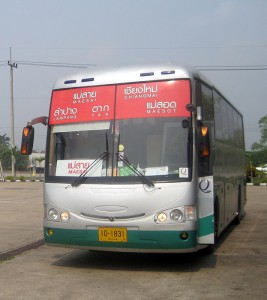
Buses can be an option for long distance travel as well but the quality and comfort can vary greatly from place to place. Again, there are many options and you may be surprised at the difference between bus travel here and that in the rest of the world. For long hauls, overnight sleeper buses are popular in China (the setup is very similar to the sleeper cars in a train with rows of bunk beds the length of the bus.) In Thailand, there are first and second class seats along with a bus attendant and snacks, similar to the service you get on short flights. Be sure to check out all the possibilities before you embark on a bus trip anywhere in Asia.
8. Boats and ferries
Some cities use major waterways as a transportation route. Bangkok is a prime example. In these areas you will find numerous boats and ferries used to shuffle people from Point A to Point B. Before you buy a ticket from the first vendor you come to, be sure to check out all the options. Often, there are local ferries and those that cater to foreign tourists. It is easy to get pressured at the harbor ticket offices before you have a chance to think about it. Usually, local transport systems are much cheaper than the tourist boats.
9. Trains
I am not going to begin to talk about the trains. This is a huge subject and well-documented on the website, Seat61, where you can find information, schedules and tickets for just about any train in the world!
10. Scooters
The city and village streets of Asia are choked with scooters, bicycles, and other two and three-wheeled vehicles. In China alone, it is estimated that there are 500 million bicycles and another few hundred million gas and electric scooters. Our home in Wuhan was no exception; I had a Honda 250cc scooter, a Chinese gas trike with a small truck box and a Chang Jiang 750cc Chinese sidecar motorcycle. If you are visiting Asia, you are bound to run into the possibility of renting a scooter. They are available in many hostels and guest-houses in most Asian countries. Renting a scooter for a day is a great way to see the countryside but you must be aware of a few things before you take off into the horizon. I am an experienced biker and I was in shock the first time I rode in China. I cannot imagine renting a scooter in Bangkok or Chiangmai without any previous experience.
1) If you have never been on a scooter before, be sure to practice in some sort of safe area such as a parking lot before you venture out onto the road. Under no circumstances should you jump on a scooter for the first time with a passenger on the back seat and head out into the traffic of an Asian city. You are asking for trouble!
2) It is probably safer to rent two scooters than to carry another person on the back unless you have experience with a passenger. Taking a passenger along takes a lot more balance and it is very easy to be put in a difficult situation with an inexperienced passenger. They can lean the wrong way, put their feet down at a bad time, and basically make maneuvering a lot more difficult. It is much easier to get out of a tight spot if you are on your own.
3) Wear a well-fitting helmet at all times. Any reputable scooter rental operation will supply helmets along with the bike.
4) Be sure to know where the horn and signal lights are located.
5) Document any damage to the scooter before you leave. Taking some quick pictures may save you money when you return if the owner decides to blame you for any previous chips, dents or missing pieces.
6) Follow normal road rules, where possible. Ignore the dare-devils around you! Stay with the pack in dangerous situations; there is safety in numbers.
7) Gas up at gas stations. You can usually find gasoline for sale in pop bottles along the roadside in many rural areas but it will be much more expensive and sometimes poor quality.
8) Park in areas where there is not likely any chance of harm to your scooter.
9) Avoid driving at night. It is difficult to see at the best of times and many locals drive around at night without headlights, which makes it more hazardous unless you really know the roads.
10) Never take you eyes of the road, and don’t try to do something else while riding. We recently watched a young female tourist ride by us adjusting her blouse with one hand. A few meters further down the road we saw her lose control as she drove through a wet section of the road and fall over with the bike. Luckily, she was not going very fast and her little skid to the pavement only resulted in a few scratches and some damage to her ego!
My wife and I have had some great scooter rides around Bali and Thailand. With careful planning and a little common sense, it is a great way to see areas that are not always accessible to regular tourists.
And Finally…Three cheers for GPS
This is definitely one of the best inventions that has come along for all travelers. If you have a smart phone, install a GPS app with maps of where you will be traveling. Or buy a cheap GPS hand-held device. Here’s the thing….you arrive at your hostel or hotel, set the location, and you will never get lost. You will always be able to find your way back. You will also know when to get off the bus when you are close to your destination. Our GPS has got us out of a tight spot more than once when we were biking in unfamiliar territory! I have one on my phone and use it constantly at home and when we are travelling. They are a godsend.
In conclusion, if you travel like a local, chances are you will be paying a lot less and seeing a lot more. Stray from the crowd, hop onto a bus or scooter and go for it. You probably will have a blast!

popular blogs

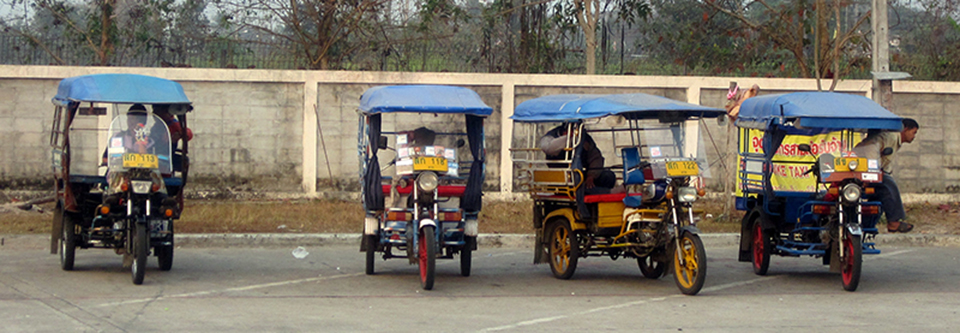
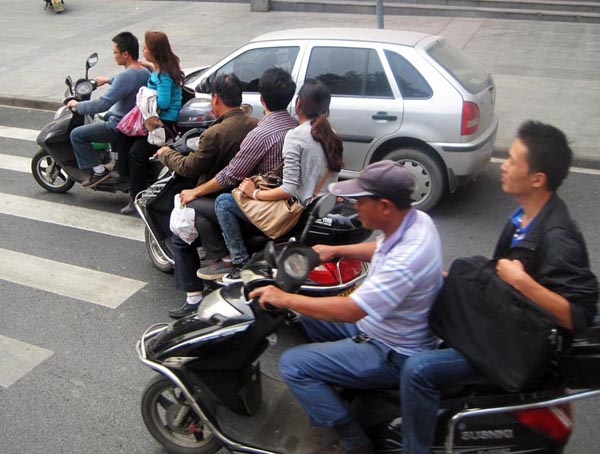
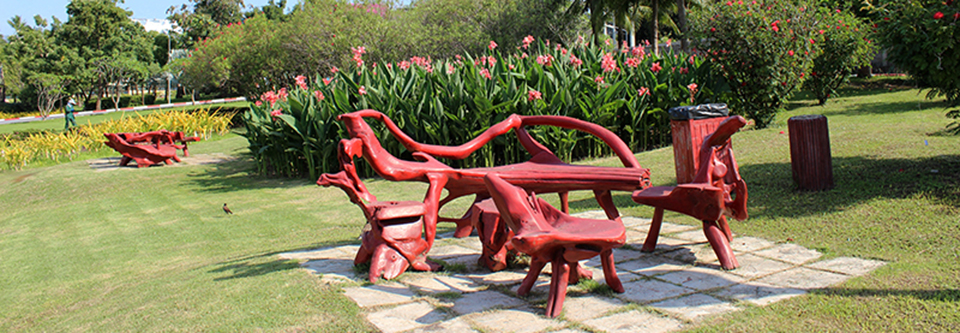
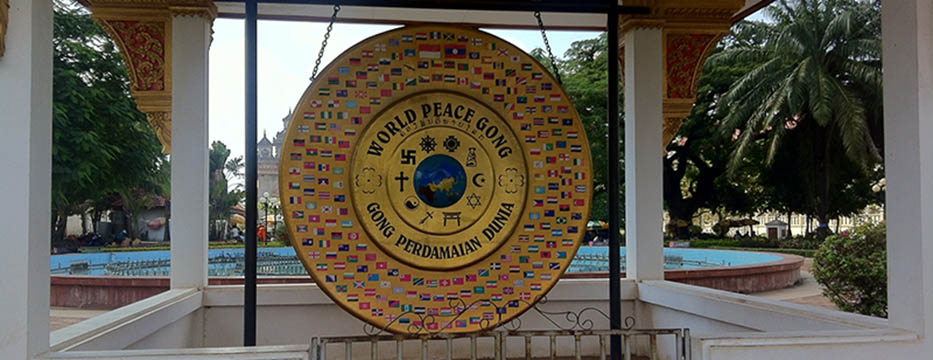

I am a retired teacher and have traveled in Europe and Asia for 25 years and I am learning from you. The websites you hot link to are new to me and very interesting. Your experiences and photos are also very interesting.
Thanks for stopping by! In hindsight, I wish I had done more world travelling 25 years ago…It is such a great learning experience.
congratulations on a great site with great info … i am travelling to wuhan in march to stay with the family of one of our previous home stay students … am definitely considering a side trip to thailand and after reading your blog i think it would be enjoyable. am residing near blue mountains in sydney. thank you and best wishes to you and your family. regards, chris .
Thanks for checking out my site! Wuhan has lots of neat stuff to see even though it is not known as a major tourist destination. We had six great years there.